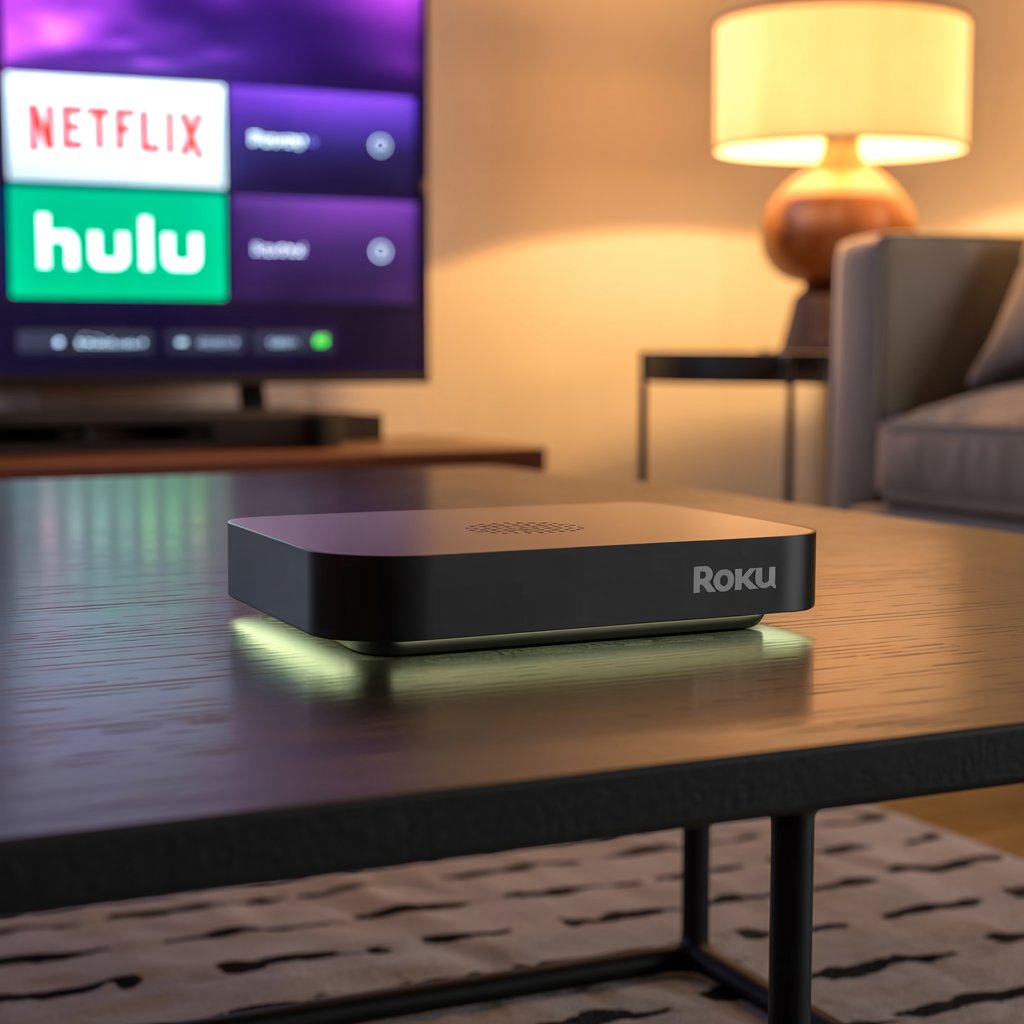iptv for roku

- No Official IPTV Service Apps
The primary obstacle for IPTV providers is the complex and geographically fragmented world of content licensing. An official app on the Roku store would imply that the provider has legally secured the rights to broadcast every channel they offer in every region where the app is available—a monumental and costly undertaking. Many IPTV services operate in a legal gray area or provide content sourced from various international streams without explicit, verifiable licenses for each region. This business model is fundamentally incompatible with Roku’s strict legal and technical requirements, making an officially sanctioned app for (iptv for roku) an unfeasible proposition for most providers.
To bridge this gap, users rely on third-party “player” applications available on the Roku Channel Store. These apps, such as IPTV Smarters or IPTV Player, are content-neutral. They function like a web browser or a video player; they do not provide any channels or movies themselves. Instead, they provide the interface for a user to input their own subscription details, typically an M3U playlist URL or login credentials obtained from a separate IPTV service. Roku permits these player apps because the apps themselves don’t violate any policies, placing the responsibility for the content squarely on the user. This method has become the standard solution for accessing (iptv for roku).
Ultimately, this arrangement has significant implications for the end-user. Unlike the seamless, integrated experience of official services like Netflix or Hulu, setting up IPTV on a Roku device requires more effort. The user is solely responsible for finding and subscribing to a reliable IPTV provider, vetting its legality, and manually configuring the player app. While this offers immense flexibility and content variety, it also means the quality, stability, and legitimacy of the service are outside of Roku’s control. This user-led, do-it-yourself approach is the defining characteristic of the entire (iptv for roku) experience.
- Third-Party Player Apps are Necessary
The need for third party apps comes from Roku’s business model itself. Roku has a “walled garden” ecosystem, meaning they have total control over the apps in their official Channel Store. Every app has to go through a rigorous certification process to make sure it meets Roku’s standards for performance, security and legal compliance. Specific IPTV service providers often operating in legal gray areas regarding content distribution rights can’t meet these strict requirements. So they can’t offer their own branded apps to users, hence a different approach is needed for (iptv for roku).
This is where third party player apps come in. These apps are content neutral, they don’t have any built in channels, movies or playlists. Think of them as a media player or a web browser – the app itself is just a tool and Roku allows them in the Channel Store because they don’t natively provide or endorse any copyrighted material. They just process and play video streams when a user provides the source, creating a compliant yet functional gateway for (iptv for roku).
The responsibility then falls on the user to make these player apps work. After downloading a generic player like IPTV Smarters or a similar app from the Roku Channel Store, the user needs to get the subscription details from an independent IPTV service. This information is usually in the form of an M3U playlist URL or an Xtream Codes login and has to be manually entered into the player app. The app then uses this link to fetch the channel list and stream the content, effectively connecting the user’s separate subscription to their TV. This two part system is the standard way of setting up (iptv for roku).
So this reliance on third party players creates a unique user experience defined by flexibility and personal responsibility. Users get access to a world of customizable content often beyond what traditional cable offers. But it also means the stability, quality and legality of the stream is not guaranteed by Roku. The user has to vet their chosen IPTV provider and understand that the player app is just a facilitator. This necessary indirect method is the established way for anyone looking to watch (iptv for roku).
- Alternative Methods Exist
While using third-party player apps from the Roku Channel Store is the most common approach, it is not the only way to view IPTV content. Alternative methods exist that can bypass the need for a dedicated player app, offering different levels of convenience and technical complexity. These options are particularly useful if a preferred player app is unavailable or if a user wants to access content from a device that has a more versatile IPTV application already installed. Understanding these workarounds provides greater flexibility for a more customised setup of (iptv for roku).
The most accessible alternative method is screen mirroring, also known as casting. This feature allows you to wirelessly project the screen of your smartphone, tablet, or computer directly onto your television via your Roku device. To use this method, you simply play your IPTV service within an app or web browser on your source device, and then activate its native casting (for Android/Windows) or AirPlay (for Apple devices) feature, selecting your Roku from the list of available devices. The primary advantage is its simplicity and the ability to use any IPTV application on your phone or PC, though it requires your source device to remain on and dedicated to streaming.
For the more technically inclined user, a powerful alternative is to sideload an application. This process involves activating a hidden “Developer Mode” on your Roku device. Once enabled, you can use your computer to directly install compatible application packages (in .zip format) that are not available in the official Channel Store. This method can be used to install a wider variety of IPTV players or other uncertified apps. However, it is a complex process that requires following specific technical steps and carries the risk that Roku may block these apps, making it a less reliable solution for (iptv for roku).
In conclusion, both screen mirroring and sideloading serve as viable alternatives to the standard app-based method. Screen mirroring offers ease of use but ties up a secondary device, while sideloading provides access to a broader range of applications at the cost of complexity and potential instability. The choice between these methods depends entirely on the user’s comfort with technology and their specific viewing needs. Each path presents a different way to achieve the same goal, which is enjoying a versatile (iptv for roku) experience beyond the official, curated ecosystem.
- User is Responsible for the Service
Of all the aspects to understand about using IPTV on a Roku device, the principle that the “User is Responsible for the Service” is the most crucial. This concept defines the relationship between the hardware manufacturer (Roku), the application developer, and you, the end-user. Roku provides the streaming player and maintains an official Channel Store with third-party player apps. However, it does not supply, vet, endorse, or have any partnership with the vast number of IPTV providers worldwide. This clear separation means that once you decide to pursue (iptv for roku), the accountability for what you watch and where you get it from shifts entirely to you.
This responsibility extends deeply into the critical areas of legality and content licensing. Many IPTV services operate in a legal gray area, offering thousands of channels without holding the proper, verifiable broadcasting rights for every region they serve. When you subscribe to one of these services, you are the one choosing to access that content. Roku is not liable for any potential copyright infringements, as its platform is merely hosting a neutral player app, not the content service itself. It is therefore your personal due diligence to research the legitimacy of your chosen provider to ensure your (iptv for roku) setup complies with local regulations.
Furthermore, you are solely responsible for the quality and reliability of your viewing experience. Issues such as buffering, low stream resolution, channels disappearing, or the entire service going offline are problems that must be addressed directly with your IPTV provider, not with Roku. Roku’s responsibility ends with the proper functioning of its device and the player app you downloaded. The performance of the IPTV service—its server stability, customer support, and the accuracy of its electronic program guide (EPG)—is part of the package you purchase from your chosen provider, completely independent of the Roku ecosystem.
In summary, the journey into the world of IPTV on the Roku platform is one of ultimate user empowerment and accountability. You gain the freedom to select from a global marketplace of content providers, customising a viewing package that suits your exact tastes and budget. However, this freedom comes with the non-negotiable responsibility of acting as your own service administrator—vetting for legality, troubleshooting performance issues, and managing your subscription. This user-centric model is the fundamental reality of using (iptv for roku).
- Potential for a Cost-Effective and Customizable Viewing Experience
One of the most compelling reasons users explore streaming alternatives is the potential for a cost-effective and customizable viewing experience, a principle that lies at the heart of using IPTV on a Roku device. Traditionally, television viewers have been locked into expensive, long-term contracts with cable or satellite providers, often paying high monthly fees for bundled packages filled with channels they never watch. IPTV services disrupt this model by typically offering access to thousands of channels from around the globe for a single, low monthly or annual fee, presenting a significant opportunity for cost savings compared to legacy TV subscriptions.
Beyond the financial benefits, the level of customization offered by IPTV is unparalleled. A single subscription can grant a user access to a staggering variety of content that would otherwise require multiple premium add-on packages. This includes international channels, 24/7 news networks, premium sports leagues from every continent, and extensive movie channels. This consolidation of diverse programming into one accessible service allows users to tailor their viewing habits precisely to their interests, creating a truly global and personalized entertainment package. For many, this ability to access a world of content is the primary driver for setting up (iptv for roku).
The customizable experience is further enhanced by features that go beyond live television. Most IPTV providers include vast Video on Demand (VOD) libraries, containing thousands of movies and complete television series that can be watched at any time, similar to platforms like Netflix or Hulu. Additionally, many services offer a “catch-up” feature, which archives broadcast programming for several days, allowing users to watch shows they missed without needing to record them. These integrated on-demand features add another layer of value, blending the immediacy of live TV with the convenience of a streaming library.
In conclusion, the combination of lower costs and deep customization creates a powerful value proposition for the modern viewer. By breaking free from the rigid and often overpriced structures of traditional television, users can build a more efficient and personalized entertainment setup. They pay less for a much broader and more flexible range of content, including live TV, VOD, and catch-up services. This potential to completely transform the home viewing experience, making it both more affordable and more aligned with individual tastes, is what makes (iptv for roku) an increasingly popular choice for consumers worldwide.
